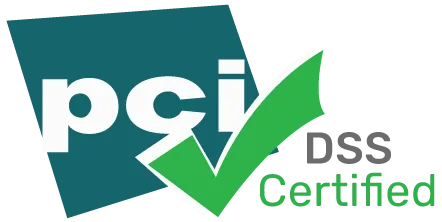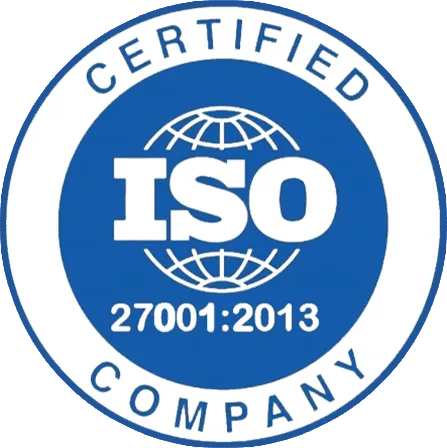With the pandemic pushing digital adoption across industries and business models, enterprise B2B brands are keener on going online now. While brands understand the benefits of having a solid digital presence, how to create a B2B ecommerce website still remains a big question for many.
Taking a B2C business online is fairly simple (thanks to various ecommerce builders), however, building a B2B (business-to-business) website from scratch and adapting it to changing market dynamics quickly still remains a daunting task.
The stupendous growth of B2B ecommerce since covid has necessitated, finding the right B2B ecommerce solutions to put your business on a growth trajectory.
Table of Contents
- Why B2B brands need to have a digital presence
- Key Takeaways from the B2B Ecommerce Trends
- How to create a B2B ecommerce website: Custom Built or Turnkey Solutions
- How to create a B2B ecommerce website in 2023 and make it a BIG success
- Things to consider before you launch your B2B ecommerce website
- Why StoreHippo is the best way to build your B2B ecommerce website
Why B2B brands need to have a digital presence
Even before you consider, how to create a B2B ecommerce website for your enterprise brand, it becomes important to assess why to build one. To understand the importance of having an online presence for your wholesale brand, let us begin by checking some latest trends.
Did you know that;

$20.9 trillion is the forecasted value of the B2B ecommerce market worldwide by 2027
17.5% CAGR of B2B ecommerce during 2022-2027
74% of buyers find buying from a B2B website easier
97% of B2B buyers prefer an automated completely digital self-serve model
93% of B2B buyers prefer buying online after finalizing their products
90% savings in sales and operating costs of retailers who launch their B2B ecommerce platform
60% of B2B ecommerce businesses said multi-channel interactions with buyers increase their average ticket size
Source: Statista, Google, Forrester, Digital Commerce 360, Research and Markets
Key Takeaways from the B2B Ecommerce Trends
Well, the trends clearly indicate:
B2B buyers are also looking for ease of use and more personalised buying experiences
Self-service is the need of the hour as it makes the buyers feel more in control of their choices and decisions
Building a B2B marketplace makes your business accessible to more buyers and seller
Going digital optimizes your costs at multiple levels and introduces operational efficiencies
A B2B website helps your enterprise brand to be perceived as ahead of the competition
Building an omnichannel brand presence helps you boost order volume
With so many evident benefits, this is the time for your enterprise business to find out the best way and answer the pertinent question, i.e; how to create a B2B ecommerce website on an immediate basis.
How to create a B2B ecommerce website: Custom Built or Turnkey Solutions
Once an enterprise business-to-business brand decides to go digital, the next step is to plan the way it wants to get its online marketplace built. Irrespective of the size of the business, there are two ways of taking your B2B business online:
1. Custom built B2B website
Going through this route entails setting up your own development team or hiring a well-known B2B website development company. Enterprise wholesale brands need to invest a significant amount of time in getting their B2B software developed from scratch.
Also, hiring a team requires a significant budget. Going forward also, the custom-built B2B software will need constant monitoring, updates, upgrades etc.
2. Turnkey B2B Ecommerce Solutions
Turnkey B2B ecommerce platforms on the other hand offer battle-tested solutions for a variety of use cases of B2B marketplace set-up. With a ready-to-use ecommerce platform, wholesale brands get one-stop solutions for all their online selling needs. From automating their processes to offering B2B features that introduce efficiencies, such platforms take care of all.
A B2B website builder not only takes care of how to create a B2B ecommerce website but also maintains and upgrades the software as per the changing market demands. Such platforms also offer easy customizations to build tailor-made solutions for unique brand needs. Integrating with preferred software and service providers is also easy on modern B2B ecommerce platforms.
With quick go-to-market time and battle-tested solutions, turnkey B2B website builders are proving to be the go-to choice for enterprise wholesale brands planning their digital foray.
How to create a B2B ecommerce website in 2023 and make it a BIG success
With B2B ecommerce showing no signs of slowing down, this is the right time to go digital and align your enterprise wholesale brand with modern buyer expectations. To get you started and go-to-market quickly, we bring a phased approach to digitize your B2B brand and gear it up for better customer experience, engagement and conversions.
Let us get started with the different phases of building your tailor-made B2B ecommerce solutions:
Phase 1: Planning, research, and strategy
To begin with the first phase of your journey lays down the foundation of your business. Starting your online business gets way too easy if your objective is clear. In this phase you need to assess the benefits of going online and what are the channels you would need to sell to your buyers.
To make a strategic move for business growth, always consider how building your B2B marketplace will benefit your business and how will it improve the buying experiences of your clients. You need to plan modules and flows that make your sales cycles shorter, processes automated and synchronised and make it easier for your clients to self-serve.
Phase 2: Choosing the best B2B Ecommerce solutions
This phase is the most crucial decision you would be taking for your business. While choosing the right B2B ecommerce platform can take your business places, going with one with limited features, complex implementation and rigid infrastructure can impede your growth.
Go for a feature-rich platform built on next-gen technology. Your B2B ecommerce solutions should have built-in B2B features and support for composable commerce so that you can create your tailored digital ecosystem. Look for an easily customizable enterprise B2B platform that can build your tailor-made B2B website.
Along with these features, it should support different business set-ups like online marketplace, multi-store network, multilingual website etc. so you can build advanced solutions to manage your dealer-distributor network from different geolocations. Also, instead of a monolithic platform go for a headless B2B ecommerce platform that makes it easier to create multiple digital touchpoints with focus on mobile commerce.
Also, your solution should have marketing tools to help you grow your organic footfall and integrate with paid marketing and analytics tools. StoreHippo offers a well-rounded B2B ecommerce solution for wholesale brands. Built on the MACH architecture, StoreHippo makes it possible to customize the backend and front end with equal ease. The API-based headless architecture easily integrates with a variety of software and solution providers to build unique ecommerce solutions for B2B brands. With a host of B2B features like pricing overrides, RFQ, bulk order processing, comprehensive vendor management, support for multi store network, multi vendor, enterprise-grade features etc. StoreHippo makes it easy for wholesale brands to build their unique B2B marketplace in no time.
Phase 3: Design and theme selection
Once you have chalked out the strategy on- how to create a B2B ecommerce website, it’s the time to design the look and feel of your brand store. Selecting the right design and theme builds the face of your online business. While deciding on the design of your B2B portal, remember these points:
Determine the channels you want to connect with your audiences
Ensure that your theme and design align well with your business goals and customer preferences
Create different landing pages or stores for different audience segments with unique look and feel
Build personalised buyer journeys by adding
Note the total cost of ownership and ways to measure ROI
This phase sets up the base and face of your enterprise B2B brand by implementing the foundation, appearance, and feel of your website. B2B buyers conditioned by their B2B experiences expect the same ease of shopping and engaging experience on B2B websites also.
Also, customers now shop on 4-6 channels on average and they expect a unified experience on all these channels. A sticky and conversion-oriended B2B marketplace design goes a long way in ensuring that your clients keep coming back for more and also recommend your brand to others.
StoreHippo comes with a rich themes library and built-in tools that make store design easy. The drag-and-drop design tools along with the mix-and-match option, support for multilingual themes, device-optimized etc. make it easy to design a B2B marketplace loved and frequented by clients.
Phase 4: Customization and integrations
Phase 4, i.e, customizations and integrations create your unique brand. If picking a suitable design and theme is all about creating the unique look and feel of your wholesale ecommerce website, then choosing your integrations and customizing your B2B platform is all about how unique B2B ecommerce solutions you create for your brand.
Customization and integrations enable you to create an ecommerce set-up tailored to your brand’s requirements. When deciding how to create a B2B ecommerce website, brands also decide on their integrations and customizations. These can range from choosing their payment options, shipping options, CRM, ERP, POS and any other software or services needed to run the business efficiently.
However, brands need to factor in the changing business environments and be prepared for quick customizations and integrations going forward. For example, you can start Your B2B marketplace with a given accounting system and use some chatbots to connect with your clients. Going forward as your business scales up, or you add new sales channels you might feel the need for newer and more advanced solutions for ERP, accounting, CRM, live chat etc.
Easy and seamless integrations enable wholesale brands to evaluate and replace different software and service providers so that they always stay ahead of competition. With an advanced B2B ecommerce platform like StoreHippo, enterprise wholesale brands can go for extensive customizations and seamless integrations as per their requirements. StoreHippo B2B solutions not only offer customizable themes but also come with customizable entities which can be extended or tweaked to suit your requirements. StoreHippo also offers 120+ integrations and enables you to integrate with your existing or preferred software and service providers easily.
Phase 5: Launch and go live
Once you are done with the aforementioned phases, you are all set to launch your enterprise B2B marketplace. But before going live, always ensure that you have tested the look and feel, system integrations, workflows and processes. Also, it is recommended to opt for a soft launch so that you can understand the unexpected errors and resolve them.
After getting rid of all those teething problems, you can launch your website with marketing and advertising efforts. You can create a niche for your brand by implementing strategic paid and organic marketing.
The SEO-friendly StoreHippo B2B ecommerce solutions come with a host of built-in marketing tools to help brands win over their customers with strategic marketing. StoreHippo also integrates seamlessly with the best-in-breed marketing and analytics tools to help enterprise brands build data-driven strategies.
Things to consider before you launch your B2B ecommerce website
While the phased approach answers all your queries related to “How to create a B2B ecommerce website?”, it is important to understand a few aspects that go a long way in ensuring your B2B brand becomes successful.
Here are the top things you need to ensure:
Hassle-free payment solutions to ensure frictionless checkouts on your B2B marketplace
A variety of shipping options which include top logistics providers as well as own fleet of delivery boys of your dealers/vendors
Multi-channel brand presence like B2B marketplace website, B2B apps, PWA stores etc. so that your buyers can shop from you on the go
Mobile solutions for the admins, vendors, delivery boys etc. to run the business on the go
Multi-channel customer support using live chat, chatbots, unified notifications etc
Serf-service on B2B marketplace to manage and shorten the complex sales cycle. Wholesale brands can use multiple custom forms to speed up business processes
With all these aspects in place, you can be sure of building a B2B brand designed for success.
Why StoreHippo is the best way to build your B2B ecommerce website
Well, you must have got the answer to “how to create a B2B ecommerce website” and it is time to get started on your growth plans. A well-designed B2B portal with host of enterprise-grade B2B features sets the wheels in motion and set-up your brand for its upward climb.
With future-ready B2B ecommerce solutions like StoreHippo you can kickstart your enterprise ecommerce business effortlessly. It offers a scalable and customization solution that is designed to accommodate your growth even when you scale exponentially. With its next-gen technology and battle-tested solutions, StoreHippo offers you everything you need to build a B2B behemoth.
Ready to explore the exciting B2B features for your brand? Start your 14-day free trial now.





















3 Comments
Leave a Reply
Leave a Reply
Leave a Reply